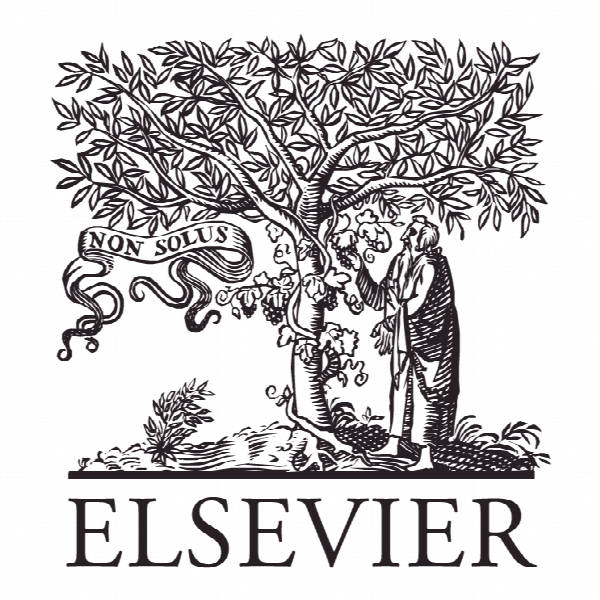پیاده سازی استراتژی و تغییر سازمانی: چگونگی تاثیر سازماندهی رسمی بر شبکه های حرفه ای Strategy implementation and organizational change: How formal reorganization affects professional networks
- نوع فایل : کتاب
- زبان : انگلیسی
- ناشر : Elsevier
- چاپ و سال / کشور: 2018
توضیحات
رشته های مرتبط مدیریت
گرایش های مرتبط مدیریت استراتژیک
مجله برنامه ریزی طولانی مدت – Long Range Planning
دانشگاه INSEAD – Bd de Constance – Fontainebleau – France
منتشر شده در نشریه الزویر
کلمات کلیدی انگلیسی Organizational change, Strategy implementation, Strategic transformation, Intraorganizational relationships, Formal structure, Professional networks
گرایش های مرتبط مدیریت استراتژیک
مجله برنامه ریزی طولانی مدت – Long Range Planning
دانشگاه INSEAD – Bd de Constance – Fontainebleau – France
منتشر شده در نشریه الزویر
کلمات کلیدی انگلیسی Organizational change, Strategy implementation, Strategic transformation, Intraorganizational relationships, Formal structure, Professional networks
Description
How do changes in formal organization structures affect professional networks? In today’s rapidly changing environment, organizations need to continually adjust and renew their strategy in order to deliver on constantly changing demands (Doz and Kosonen, 2010). To make these adjustments in strategy, an organization may need to change and adapt the day-to-day activities and interactions of its employees (Doz and Kosonen, 2010; Karim and Williams, 2012). One approach that firms take to alter employee behaviors to fit with a new strategic direction is to change the formal organization structure (Beer and Nohria, 2000; Johnson, 1992; Kostova and Roth, 2002; Malhotra and Hinings, 2015). Indeed, a long line of research in strategy has argued that strategy is an important determinant of structure (Amburgey and Dacin, 1994; Chandler, 1962). As the formal structure is changed, individuals inside the organization are often required to accept new formal work roles. As people are moved across organizational groups and assigned new roles and responsibilities, the informal connections they rely on to get things done, also change (Barley, 1990; Ibarra, 1992; Karim and Williams, 2012; Kleinbaum and Stuart, 2014a; Mohrman et al., 2003; Vogel, 2005). Recent work on the interaction between formal organizational structure and employee interactions has recognized that structural change affects organizational networks (e.g., Gulati and Puranam, 2009; Kleinbaum and Stuart, 2014a, 2014b; Soda and Zaheer, 2012). Yet, the impact of formal change efforts on networks is often uncertain and is likely to affect different relationships differently. Hence, we still know little about how different work relationships are affected and which type of relationships are more likely to be affected by structural change. In this paper, we seek to further understand the interaction between change in formal structure and professional networks. In particular, we consider how the surrounding social structure affects the ability of employees to maintain their work-related networks when formal structural change is introduced. Structural change may be implemented in order to change or alter interactions among organizational members to achieve different outcomes including strategic transformations (Gulati and Puranam, 2009; Hung, 2002; Karim and Kaul, 2015; Melin, 1985; Padula, 2008). Hence, for the success of strategy implementation, it is important to gain a better understanding of the complex interactions between structural change efforts and intraorganizational networks. A long line of research on intraorganizational networks has established that organization members need to invest time and energy to maintain their professional networks. Otherwise they may decay and ultimately cease to exist (Burt, 2001; Levin et al., 2011). Moreover, we know that organization members are most likely to interact with others as mandated within the formal organizational boundaries (Barnard, 1938; Karim and Kaul, 2015; Karim and Williams, 2012; Kleinbaum et al., 2013). If the formal structure of interactions is changed, this will therefore have consequences for where organization members choose to invest time and energy in terms of maintaining their relationships. Ultimately formal change may therefore have consequences for strategy implementation. We therefore ask how formal structural change is associated with the ability to maintain professional networks? And, in particular, we develop hypotheses about how different characteristics of the individual network tie affect this association. We test our hypotheses on a unique dataset of 884 intraorganizational peer networks of 96 senior partners in a large management consulting firm that had gone through a strategic transformation. As a result of the change in strategy, the firm had implemented a major reorganization of the formal structure 18 months prior to our study. The focus of the empirical analysis is therefore how the characteristics of the network ties are associated with the partners’ perceived ability to maintain their intraorganizational networks after a change in the formal structure.


